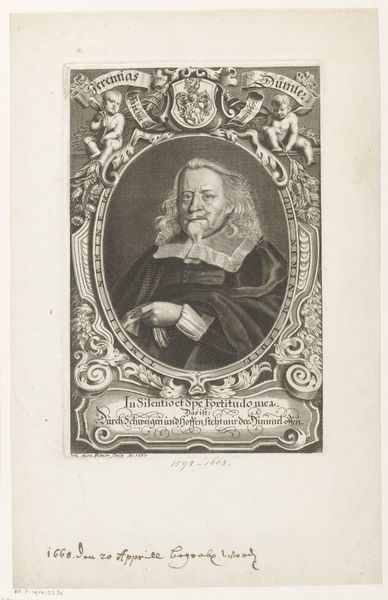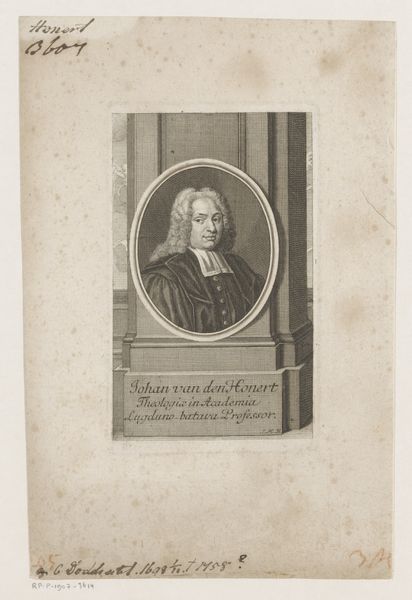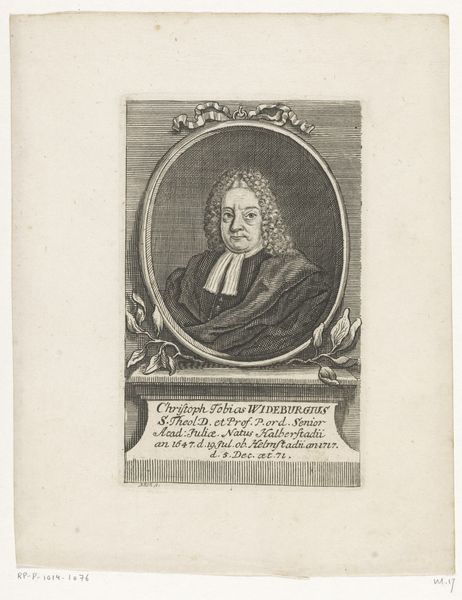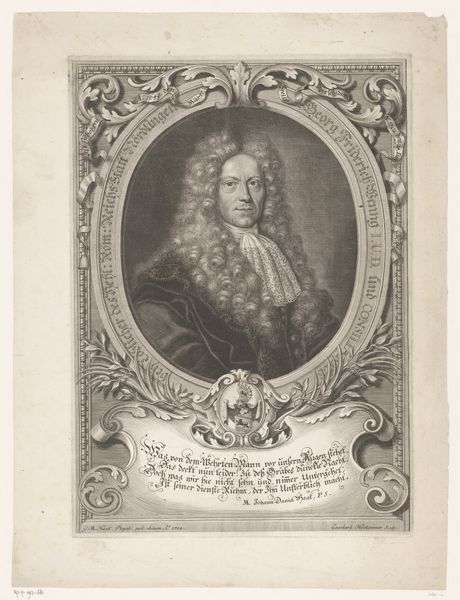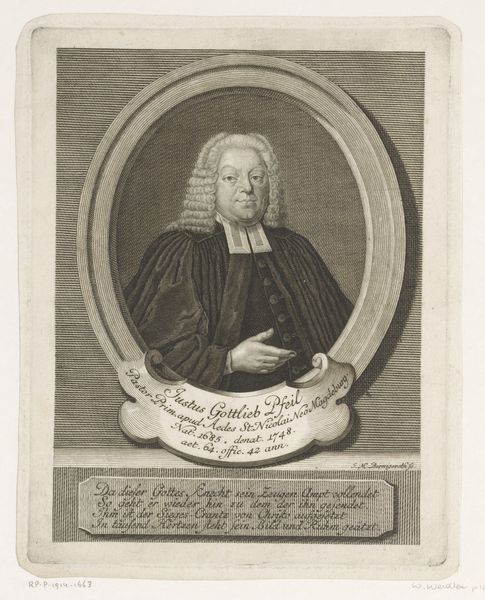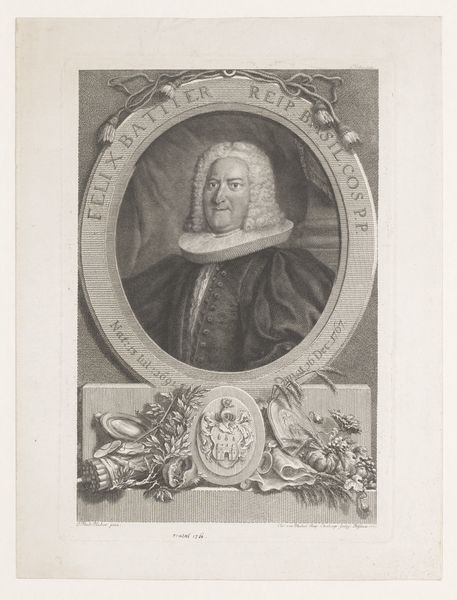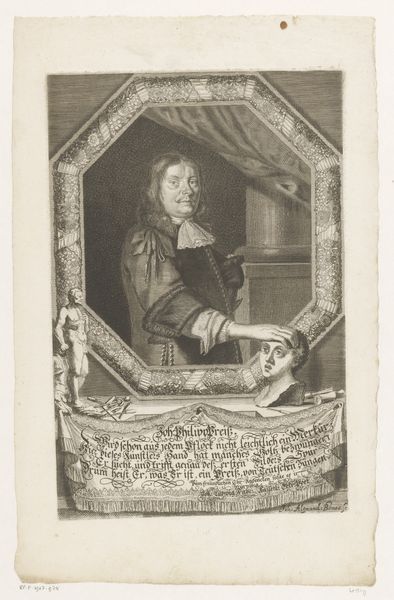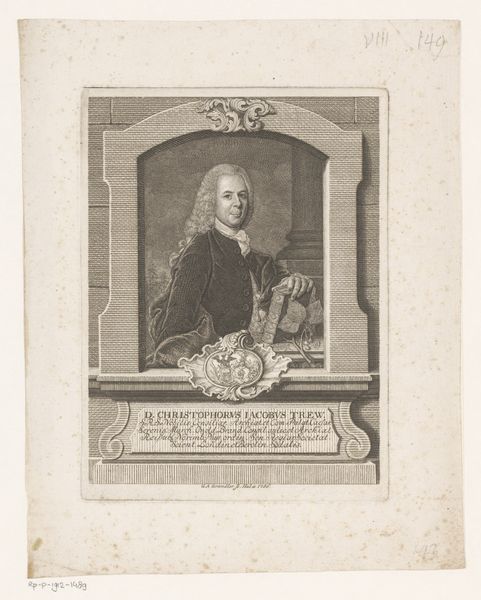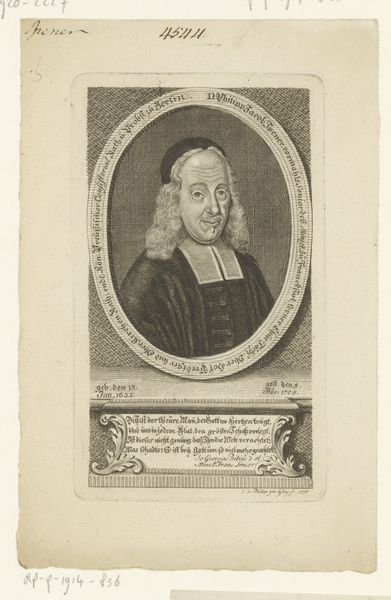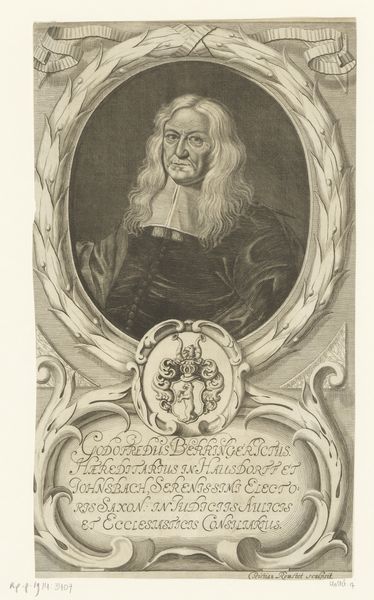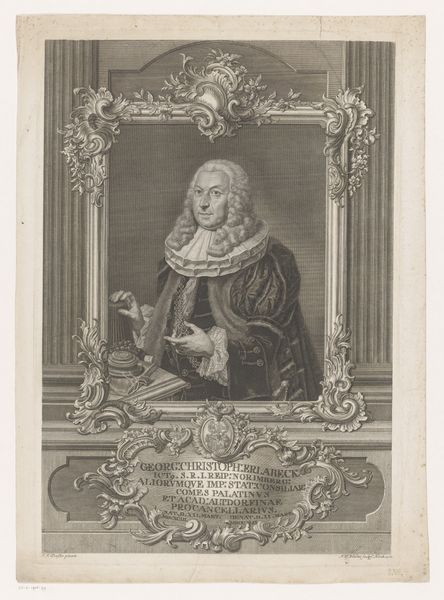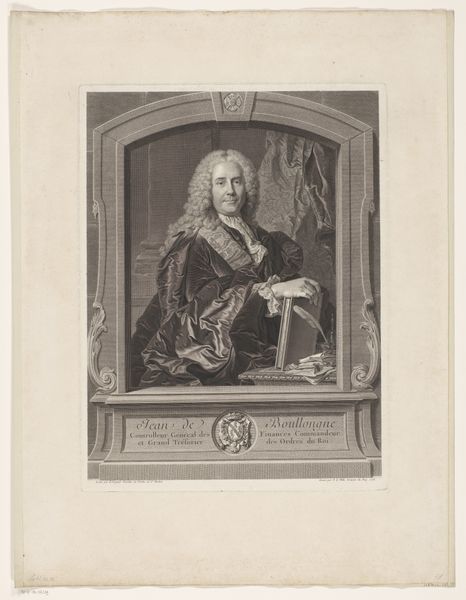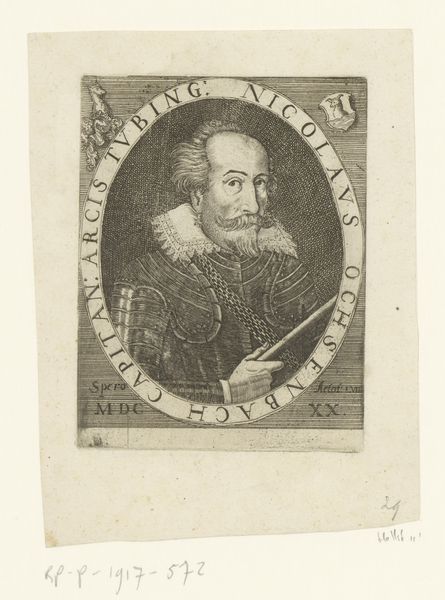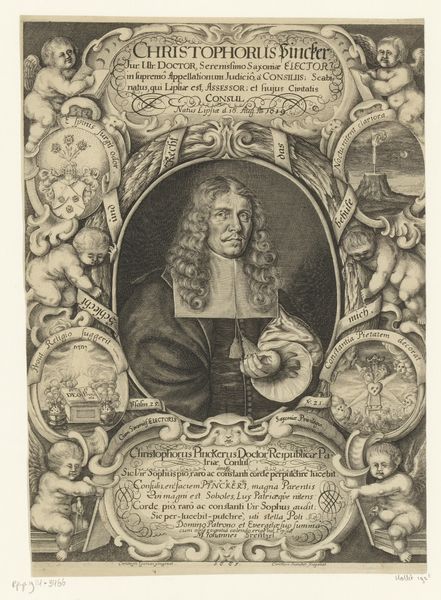
print, engraving
#
portrait
#
baroque
# print
#
history-painting
#
engraving
Dimensions: height 181 mm, width 150 mm
Copyright: Rijks Museum: Open Domain
Curator: This engraving, "Portret van Benjamin Heyden," produced between 1665 and 1721 by Christian Romstet, immediately calls attention to the detailed work evident in its creation. The lines, the hatching, the way the image is constructed from essentially repetitive marks – it's all very process-oriented, don't you think? Editor: It really is! The precision of the engraving is striking. I also notice how the ornate frame almost overpowers the central figure. What do you see in terms of its material context? Curator: The very nature of printmaking in this era speaks to a growing culture of dissemination. Consider the labor involved in creating this image. An artisan, Romstet, meticulously transfers an image, likely of an important individual, onto a copper plate, allowing for multiple reproductions. It shifts the idea of the unique, precious art object. It's accessible in a way an original painting simply couldn't be. Editor: So the material – the engraving and printing – makes it more democratic in a way? It’s no longer a unique commodity? Curator: Exactly. This is more than just an image; it’s a mass-produced item reflecting specific social relations of production and consumption. It also speaks to the evolving status of the artist as artisan, balancing technical skill with creative expression under particular market conditions. Were engravings valued less than paintings for example because of the easier distribution? Editor: That's a great question. I hadn't considered how the process and reproducibility changed the perception of the artist and the value of the artwork itself. Curator: Think of it this way: this portrait circulated in a context of burgeoning print culture. Consider what kind of labor it meant, both intellectual and manual, for such an object to exist and circulate. How were such portraits perceived, and for what purposes were they produced and consumed? That’s where we understand not only art but also the larger social and economic conditions of the time. Editor: It’s fascinating how focusing on the materiality of this piece opens up so many avenues for understanding its historical and social significance. Thank you.
Comments
No comments
Be the first to comment and join the conversation on the ultimate creative platform.
